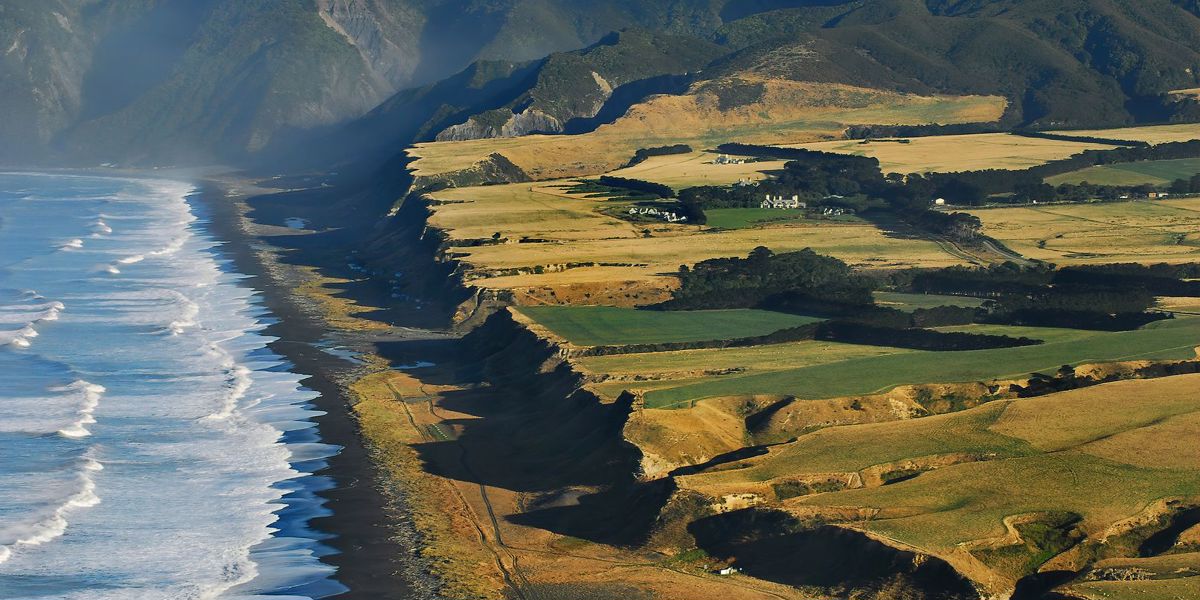The Wairarapa’s best natural attractions
Our lightly populated Wairarapa region has been described as having a wild and untouched feel. With the Tararua ranges to the west, a rugged coastline to the east and just five main sleepy towns nestled in between, it is the perfect, peaceful place to escape the daily grind. Guests at Wharekauhau Lodge are already spoilt with unrivalled views—but there are other many other amazing natural attractions nearby that are worth a look. Once visited, they may just make the Wairarapa your new favourite holiday destination.
Cape Palliser
Sitting on the other side of Palliser Bay, just a one-hour drive from Wharekauhau, is Cape Palliser: the southernmost point of the North Island. Extending further south than the South Island townships of Nelson and Blenheim, Cape Palliser sits high above the sea offering incredible and expansive views. The North Island’s largest fur seal colony is located here and if visiting in the summer months, you could be lucky enough to encounter some adorable fur seal pups. You won’t want to leave without seeing Cape Palliser’s most famous landmark up close—the Cape Palliser lighthouse. With its traditional design and distinctive red and white stripes, the 133-year-old lighthouse offers a stunning contrast against the backdrop of the Pacific Ocean.
The Putangirua Pinnacles
The fascinating Putangirua Pinnacles can be found at the head of a valley in the Aorangi Ranges, just a 45-minute drive from Wharekauhau. ‘The Pinnacles’, as they are colloquially known, are a group of jagged rocks that stick straight up in the air, resembling stalagmites on a cave floor—but on a much larger scale. The Putangirua Pinaccles are hoodoos—rock formations that emerge in a specific type of terrain as a result of long-term erosion by wind and water. It’s not known exactly how old The Pinnacles are, but they are thought to be less than 125,000 years old; with major erosion beginning 7000 years ago and escalating in the last 1000 years following deforestation. Movie buffs may also recognise the Putangirua Pinnacles from ‘The Lord of the Rings: The Return of the King’.
Raumahanga River and Wairarapa Moana Wetlands
For those hoping to try a new outdoor activity, the Raumahanga River is touted as one of the best places in New Zealand to catch a trout. The river begins high in the Tararua ranges north-west of Masterton, runs through the Tararua Conservation Park then empties into the tidal Lake Onoke, linking up with many smaller tributaries on the way. The 100-kilometre long river sustains both brown trout and rainbow trout populations, and it is an important tributary to the Wairarapa Moana Wetlands system—the largest wetlands system in the southern North Island, situated just 25 minutes from Wharekauhau. The protected area supports hundreds of diverse bird and fish species including international migratory birds and the threatened brown mudfish and giant kokopu.
Castlepoint Beach
Castlepoint Beach is a popular holiday and weekend destination for Wairarapa and Wellington locals. The unpatrolled beach offers surfing, fishing, swimming, walking trails and yet another charming lighthouse—one of only two remaining beam lighthouses in the country. The unspoiled beach attracts dolphins, fur seals and a wide variety of birdlife, and the 162-metre high Castle Rock breeds its very own flower that can’t be found anywhere else in the world—the Castlepoint Daisy. Castlepoint Beach is a two-hour drive from Wharekauhau, making it the perfect Wairarapa day trip for those wanting to explore more of the region’s amazing coastline.



